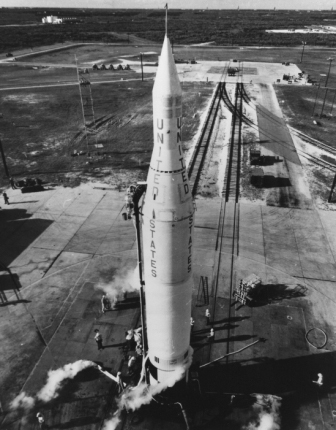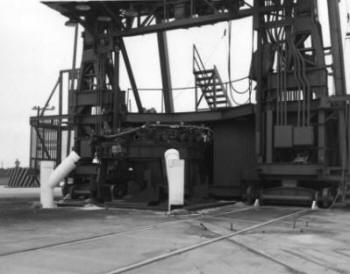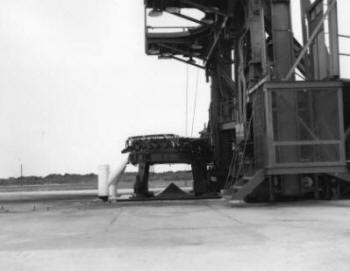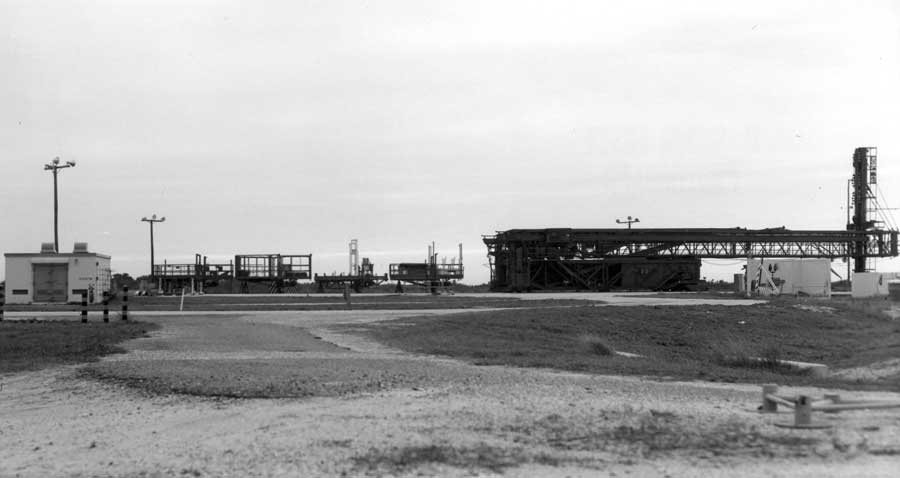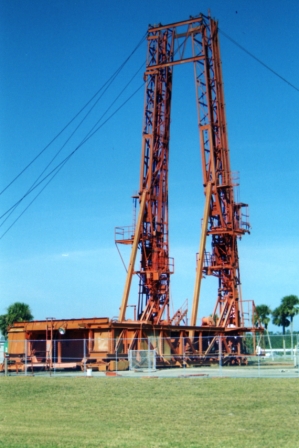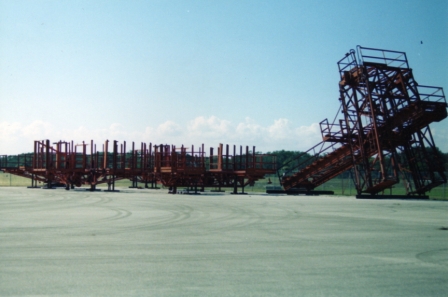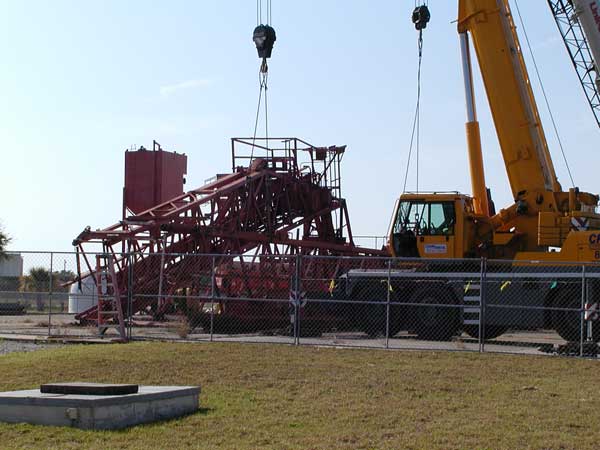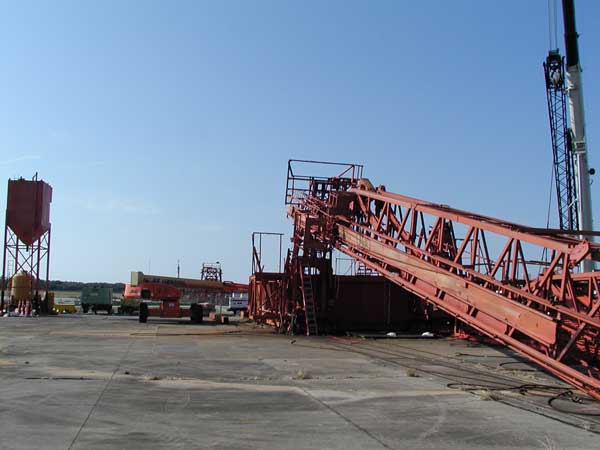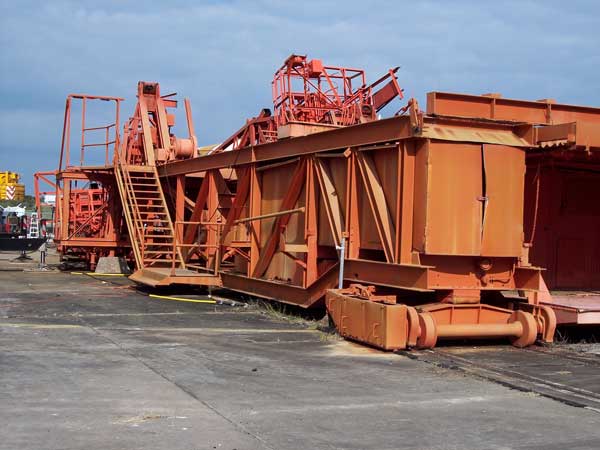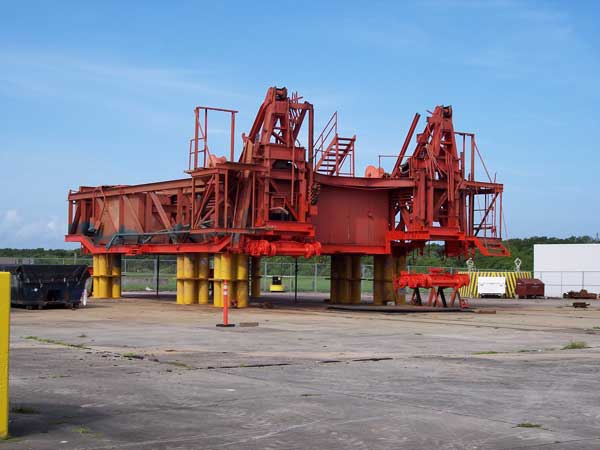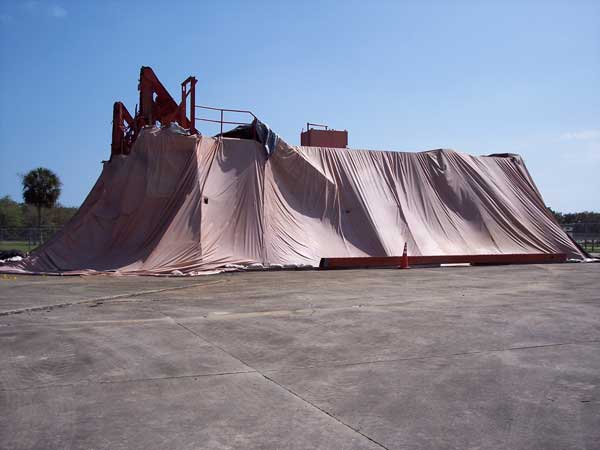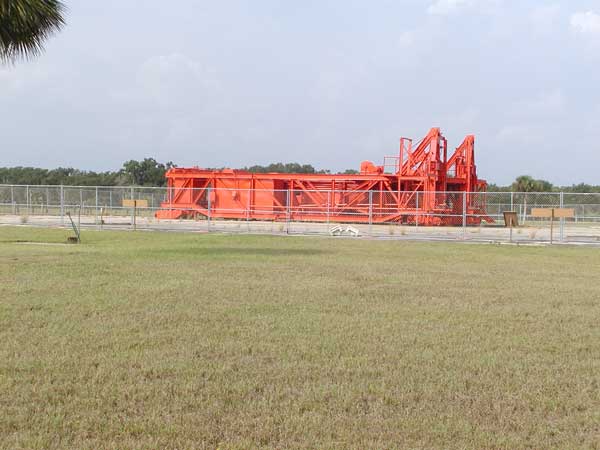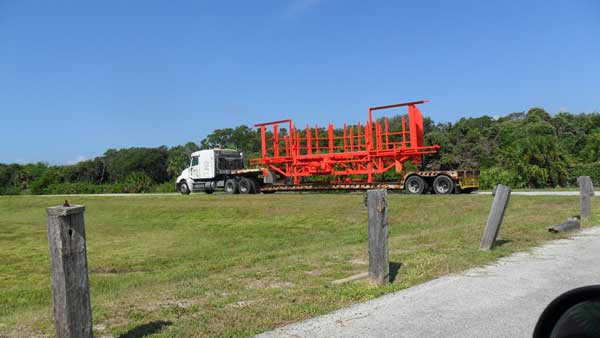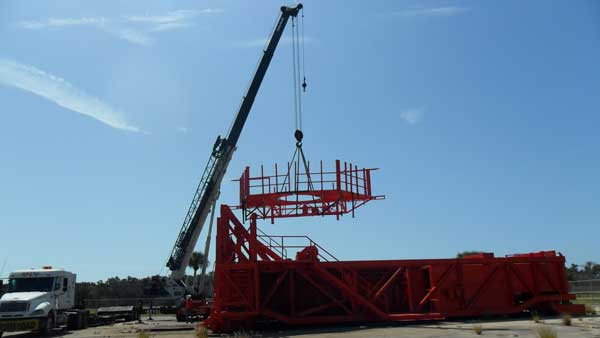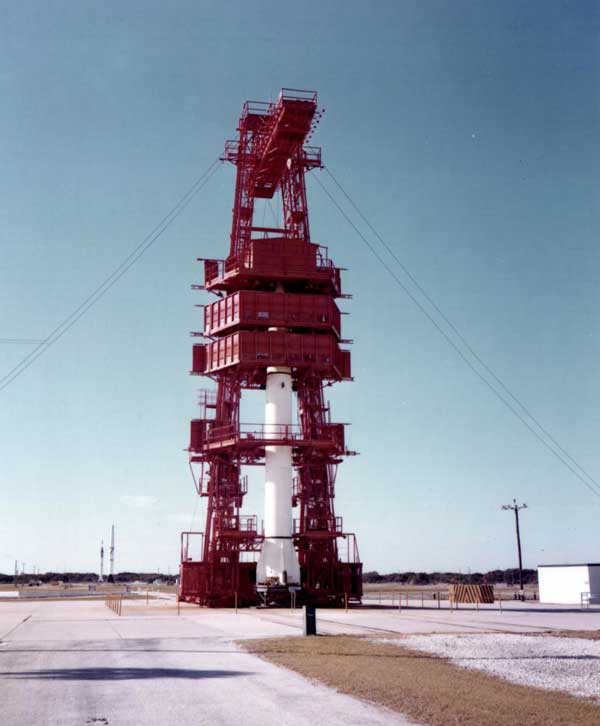
Photo Gallery
Restoration Gallery
History
The Launch Complex 26 gantry was built in 1957 by the Noble Company of Oakland California from U.S. Army Corps of Engineers specifications.
A near twin to this gantry was built in 1954 to service Redstone missiles at Launch Complex 4. That gantry was moved to neighboring Launch Complex 5/6 upon its activation in 1955 and was scrapped after deactivation of the launch complex in 1962, making the Launch Complex 26 gantry the lone survivor.
Click the button below for the full the story behind this gantry and the Noble Company that built it.
Read More HereFirst Satellite Launch
It was the surviving gantry that serviced the booster and Explorer I, the first U.S. earth orbiting satellite.
The gantry was designed to provide working access to rockets standing on the launch pad. There were five work platforms, four of which could be adjusted to any level along the vertical tower. The top platform was completely enclosed to provide a clean working environment for payload servicing.
How It Worked
A traveling hoist at the very top would lift rockets and payloads for stacking on the launch pad. There was a large room in the base that was used as an on-site office and ready room. The entire gantry was mounted on four motorized rail trucks that could move the gantry along tracks to any of the four launch pads of Launch Complexes 5/6 and 26. A self-contained diesel generator and fuel supply provided electrical power to drive the traveling motors and hoists. The tower section could be folded down to a horizontal position for maintenance or hurricane protection.
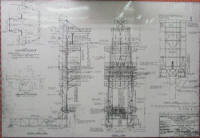
An original blueprint for the gantry is on display in the block and can by seen by clicking on the image (left). How tall is the gantry? According to the blueprint it is 111 feet 9 inches to the top rail on the tower (minus lights and lightning rods above the rail).
The photo (top left) shows the gantry in 1974 with Redstone rocket standing on Launch Pad 26B. This is how the gantry appeared for many years at the museum and before restoration began.
Gantry Restoration
The gantry restoration that began in 2005 is an expensive, long-term project. After disassembly was complete, sandblasting and painting of the gantry base section took about one year under the cover of a massive tent. The tent contained the hazardous lead paint-laced blasting media so that it could be safely removed to a suitable disposal area. The gantry restoration is still in work.
A more complete historical summary of the gantry and the Noble Company that built it is available for download and viewing in this Adobe PDF. This document is large and, depending upon your internet connection speed, may take significant time to download for viewing.
Related Pages:
- Launch Complex 26 Blockhouse Exhibit
- Launch Complex 26 Launch Pads Exhibit
- CCSFS Launch Complex 26
- USAF Space and Missile Museum

